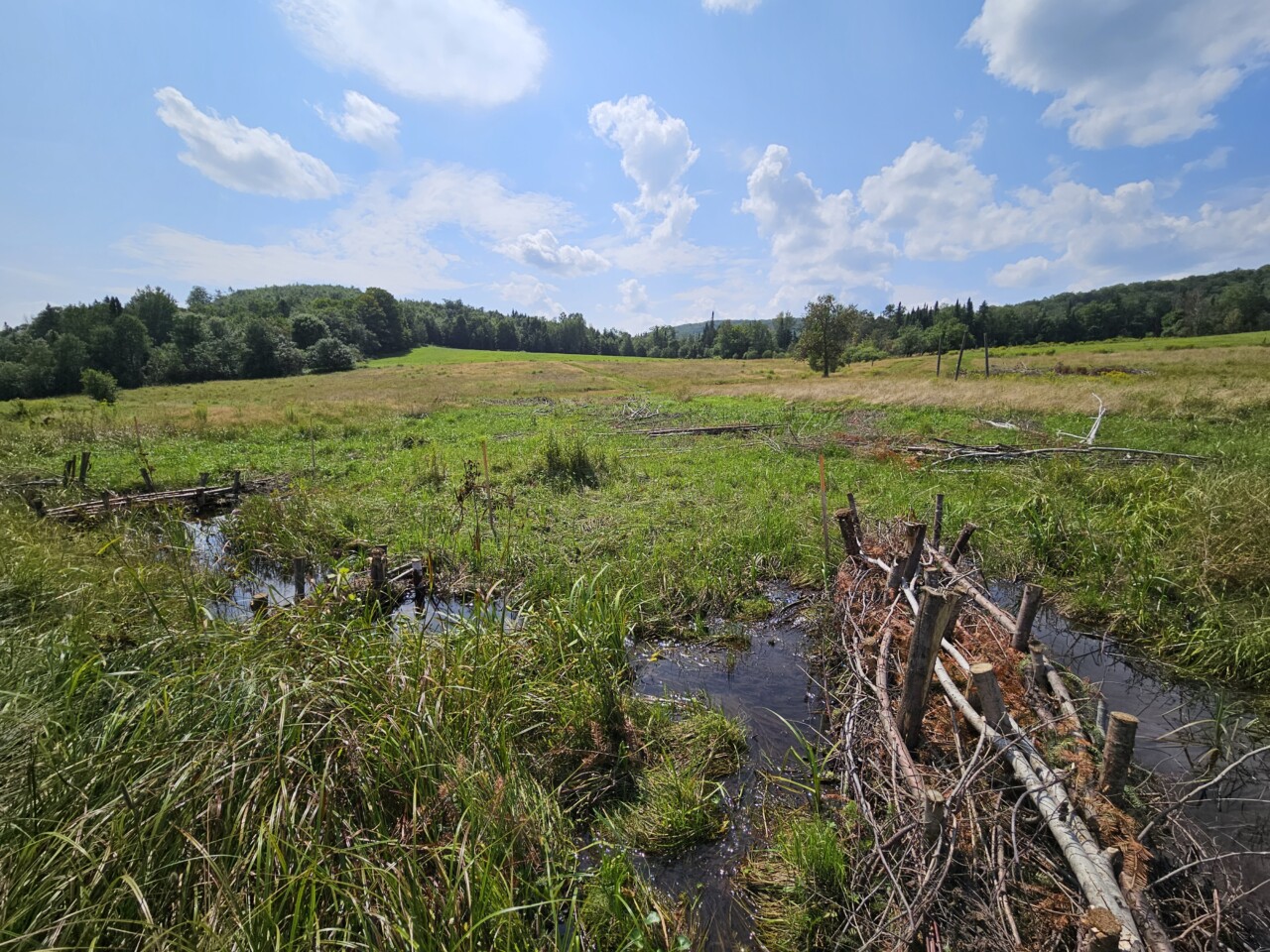Controlling the flow of water is a large part of ensuring the health of riparian areas. One way that we can achieve this is by mimicking and encouraging beaver activity through the use of Beaver Dam Analogues (BDAs). This form of Low-Tech Process Based Restoration (PBR) uses human-made “leaky beaver dams” to slow down the flow of water and spread it out to increase the saturation of the water table. Our goal is that these control structures work well enough to encourage nature’s environmental engineers (actual beavers!) to move in and improve these dams.
The Riparian Lands Crew, and most recently the fall Watershed Crew, has been hard at work with the Memphremagog Watershed Association (MWA) and Vermont Fish and Wildlife Department (VFWD) to implement BDAs on state-owned land. To begin the construction, materials are gathered from nearby forested areas on the property. Trees with 2”-4” DBH are felled, delimbed, and cut into 4’ sections to be used as posts. These posts are cut to a point on one end and flat on the other end to be pounded into the ground at the predetermined BDA sites. Posts are set 1’ apart in rows along drainage ditches and other areas of precipitation runoff. BDAs require a single or double row of posts depending on the velocity of the water at that point.
Once in place, limbs from the felled trees are woven between the posts and packed down to create a good base. Coniferous and leafy branches are packed between rows of posts and at the base of single-row structures, as they provide superb filtration of silt and sediment. Layers of tree limbs continue to be woven until they near the top of the posts, at which point they are topped off with a large log to further pack down the structure and prevent movement.
Any material not used for BDAs will be implemented into other restoration actions on site such as floodplain roughness, farm road decommissioning, and habitat structures. This area will continue to be monitored to ensure they are continuing to hold water as other projects are completed on site. Other water quality improvement projects include trash removal, deconstruction of a barn on the property, hydroseeding throughout one acre of restored floodplain, and additional BDAs after soil excavation changes the landscape.

Fig 1. Multiple BDAs holding back water

Fig 2. Downstream view of single row BDA



